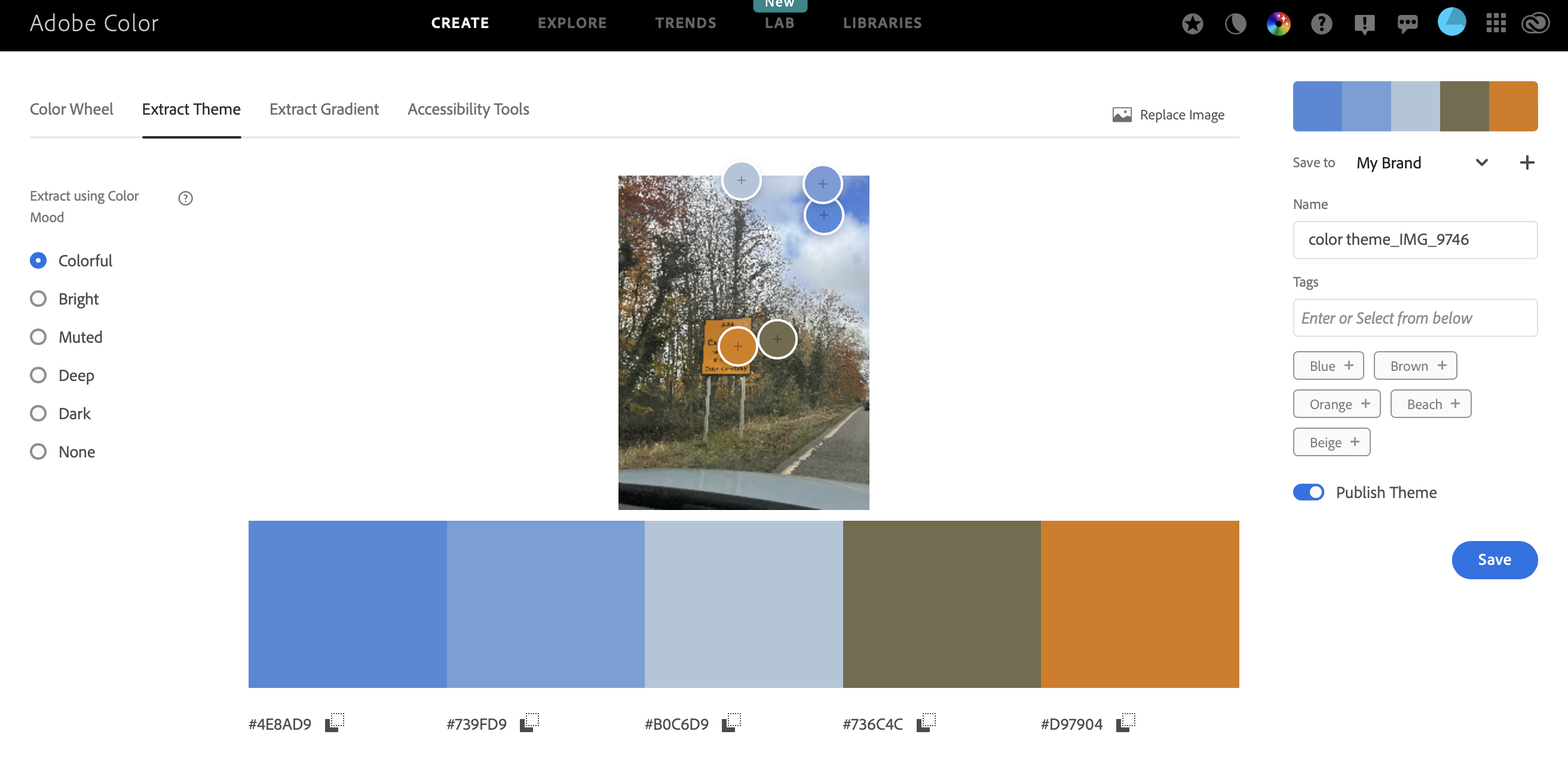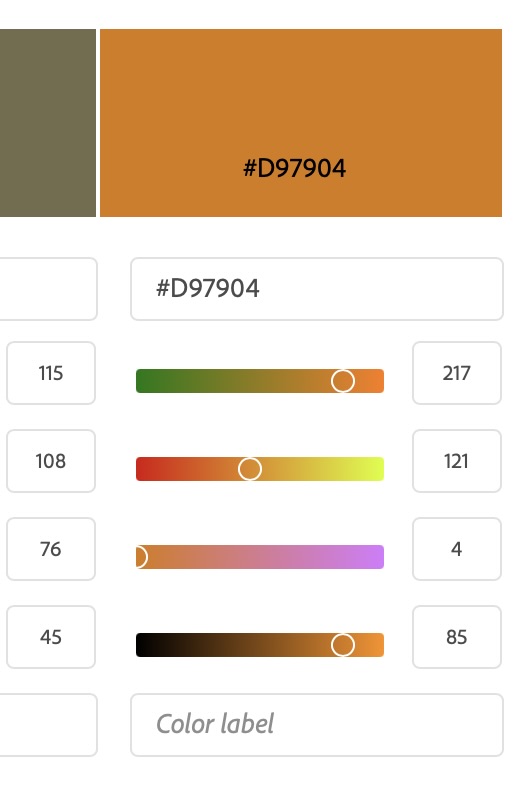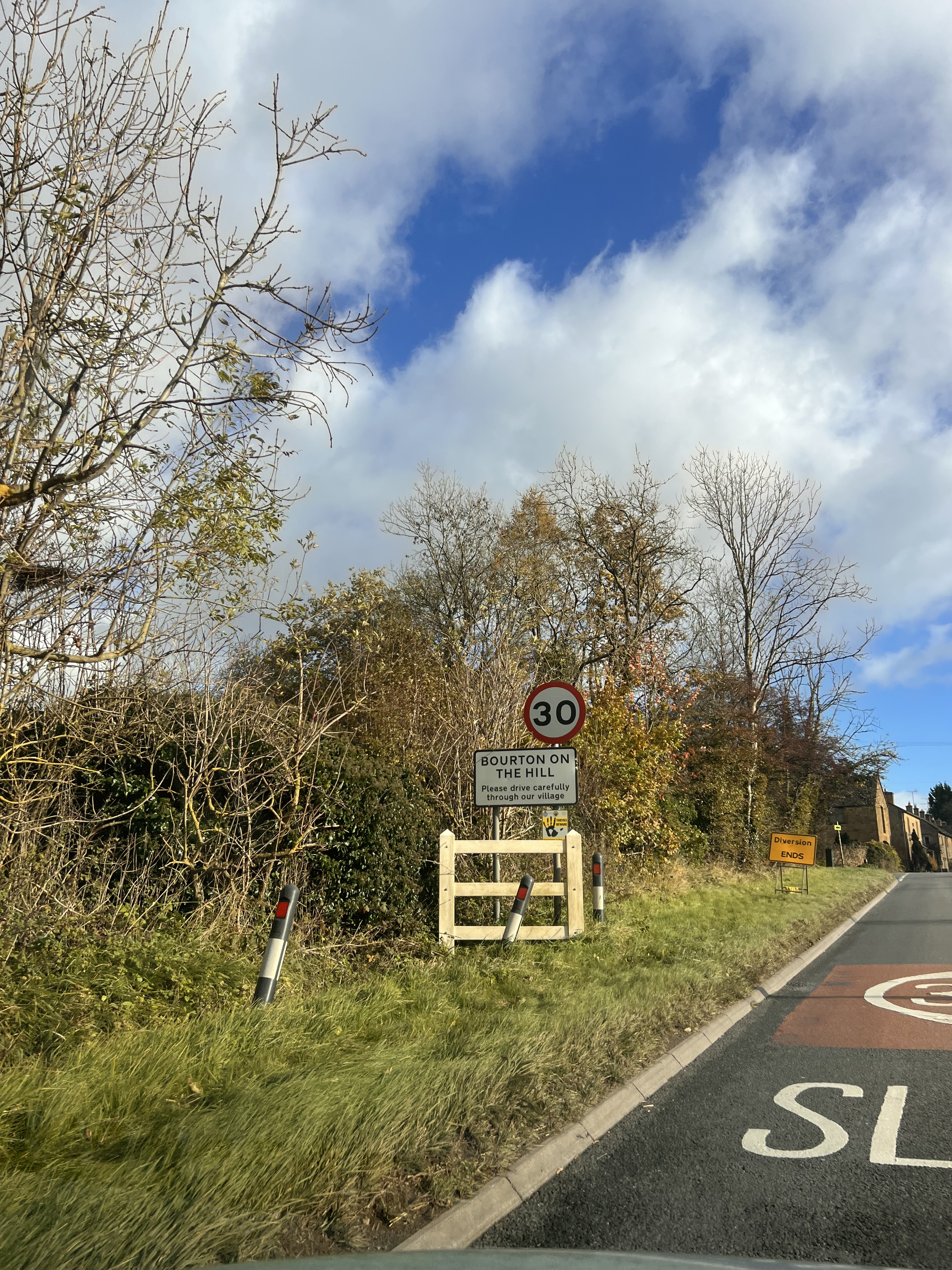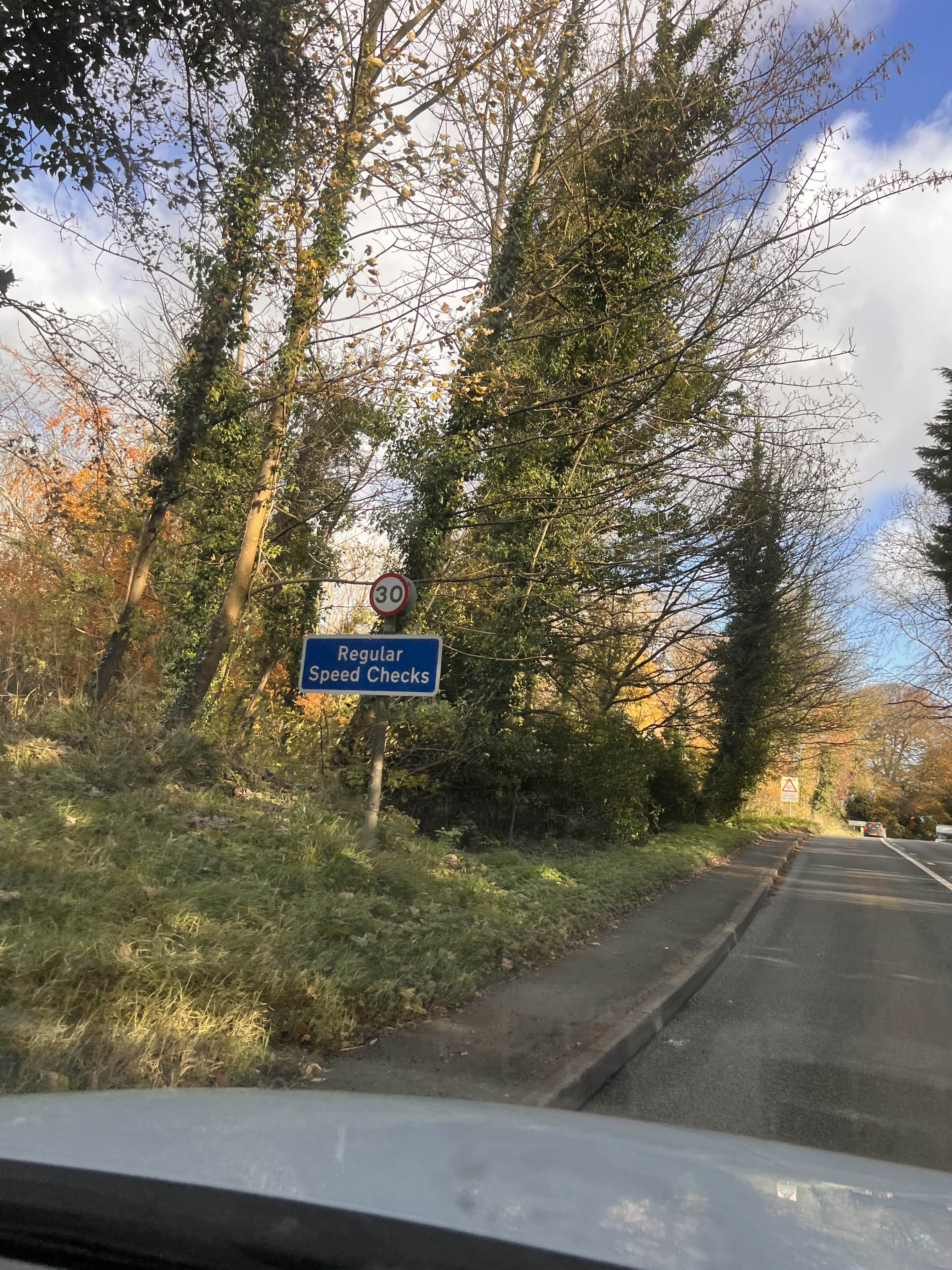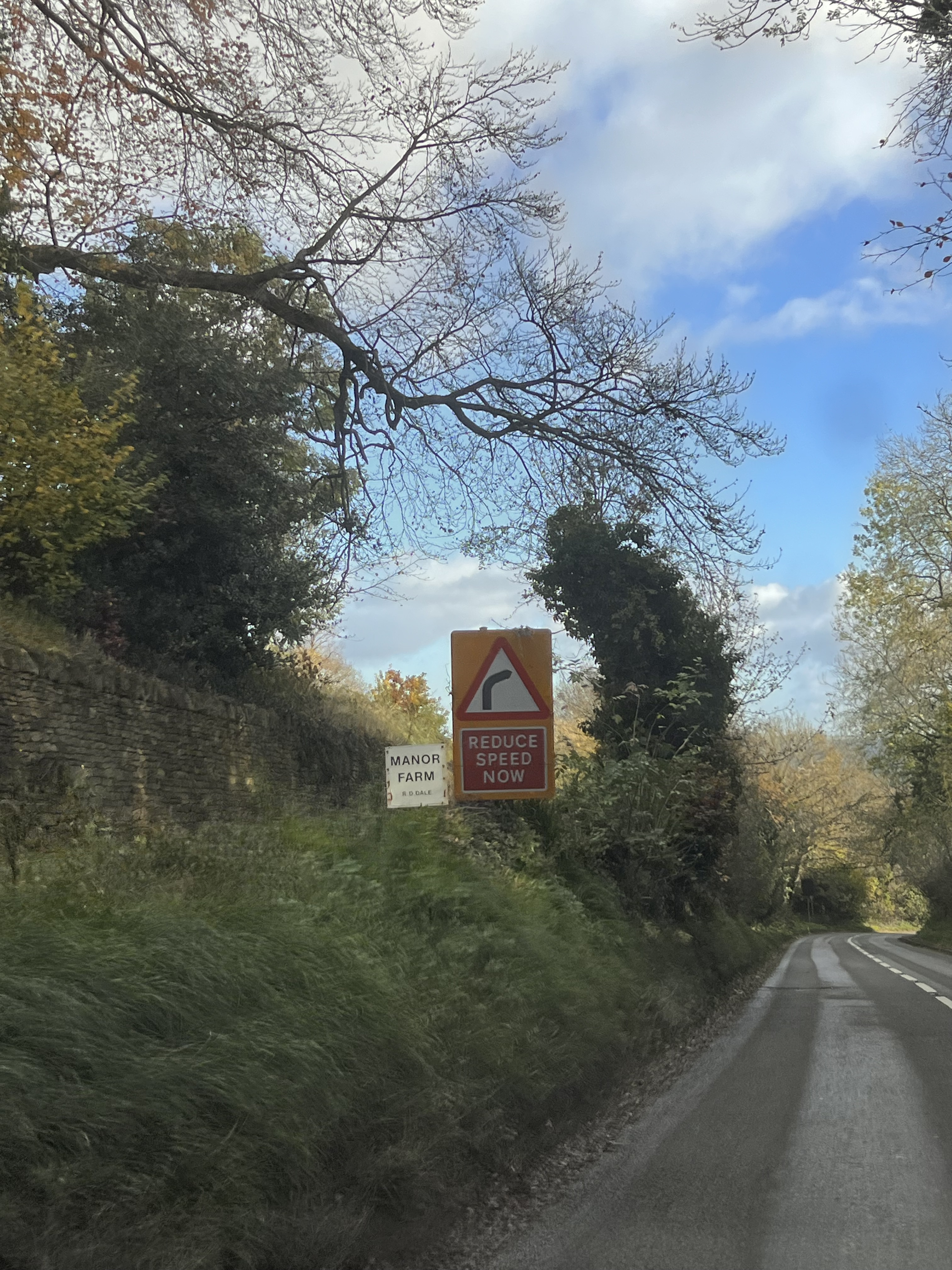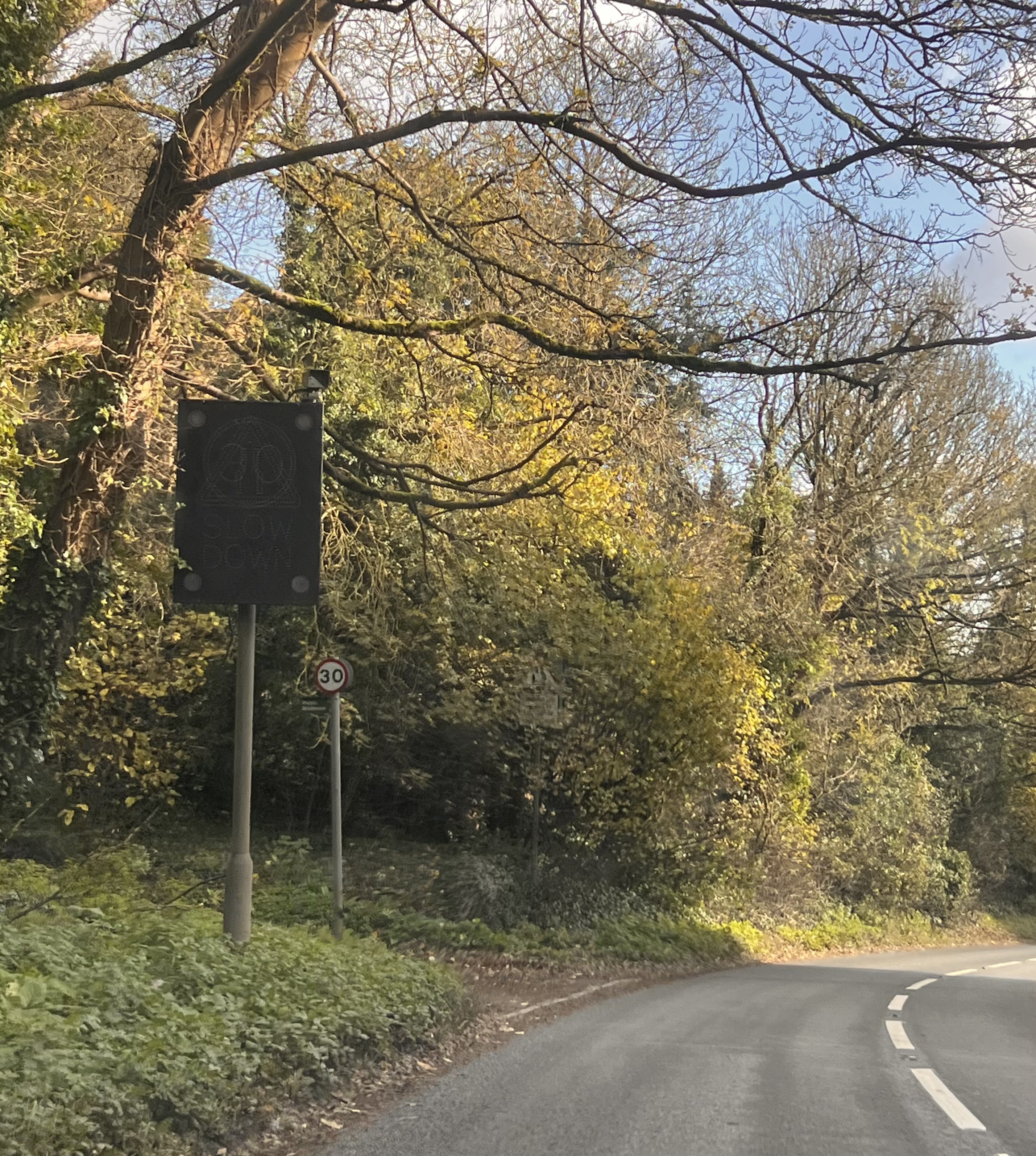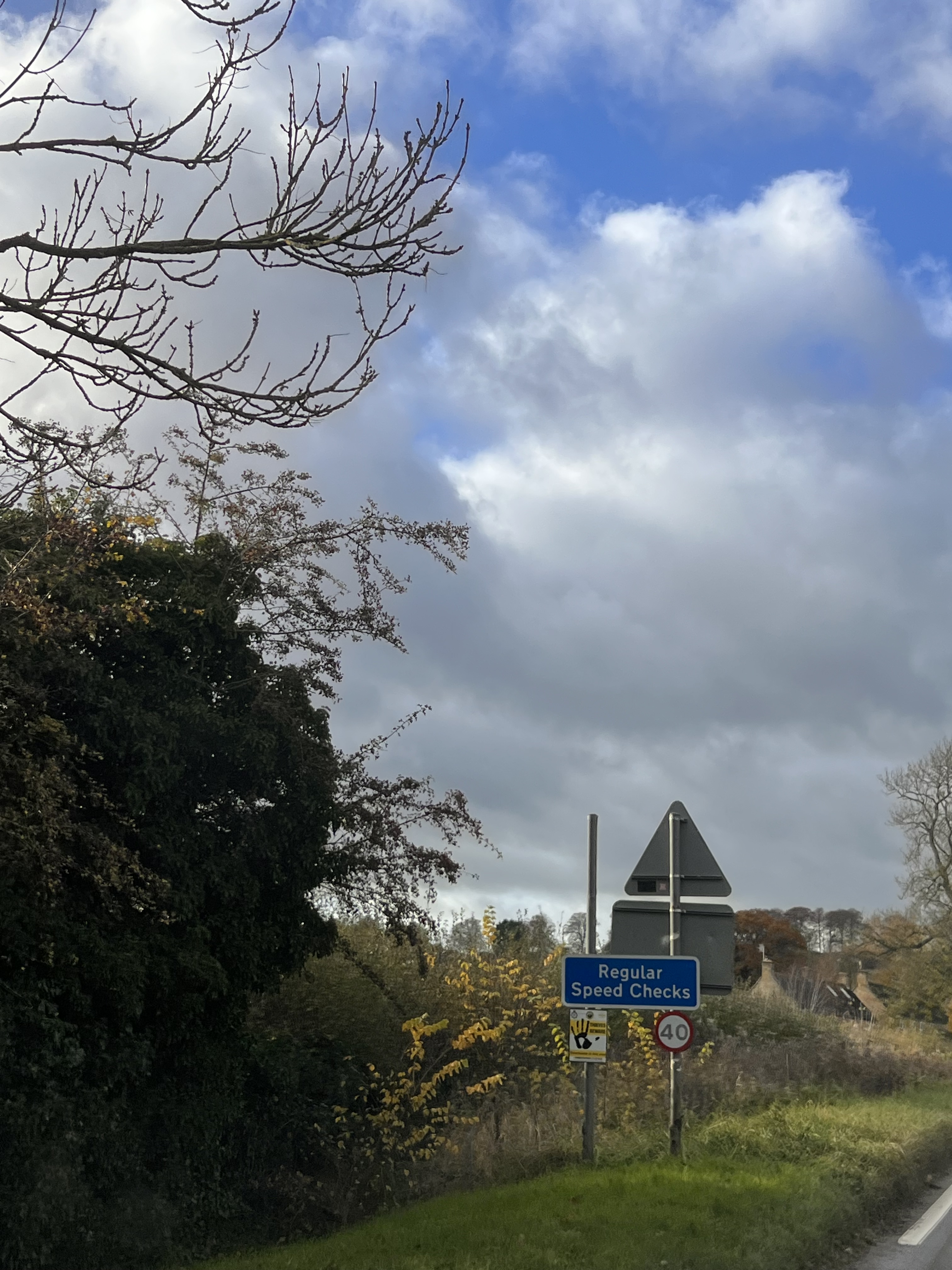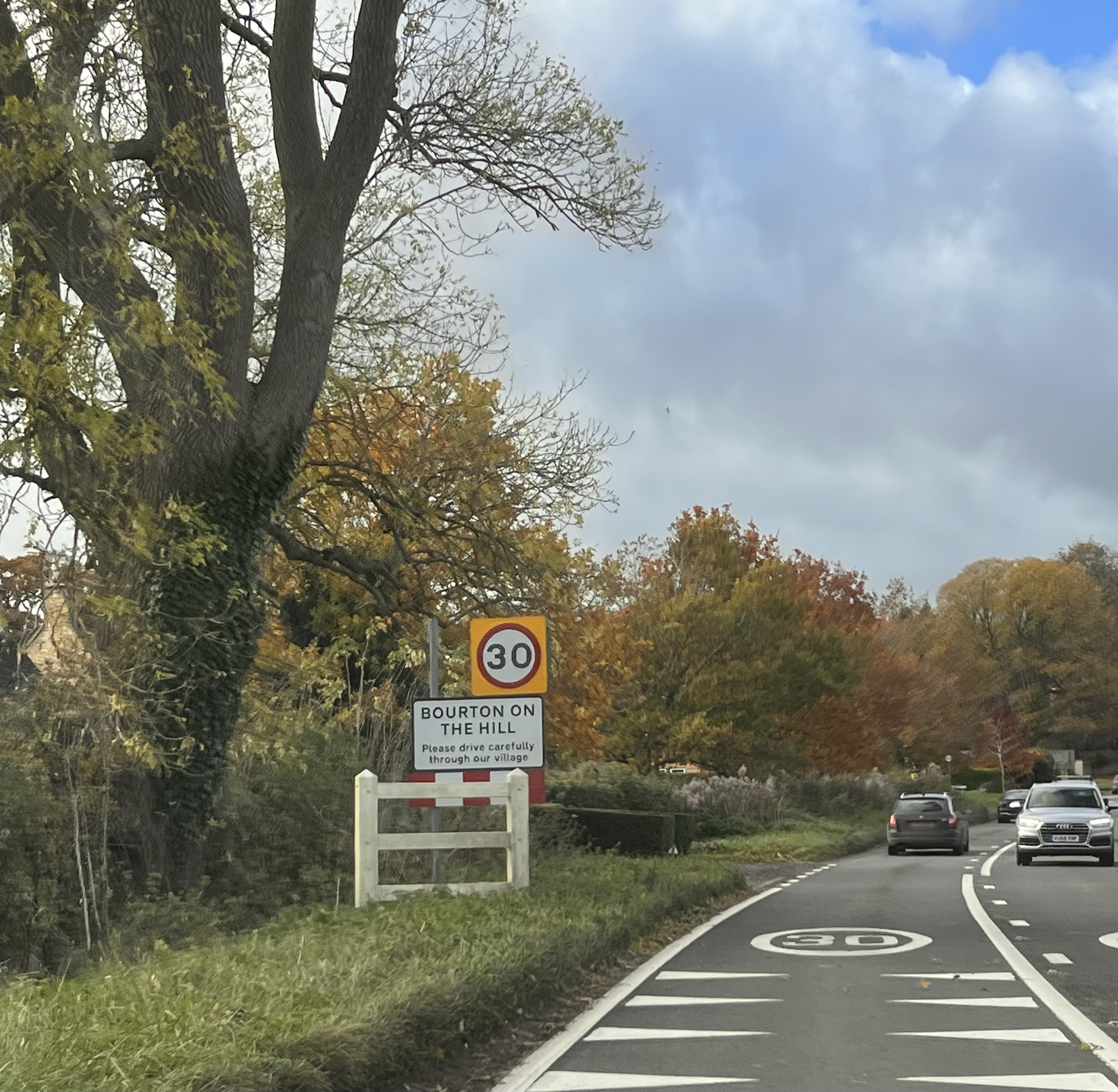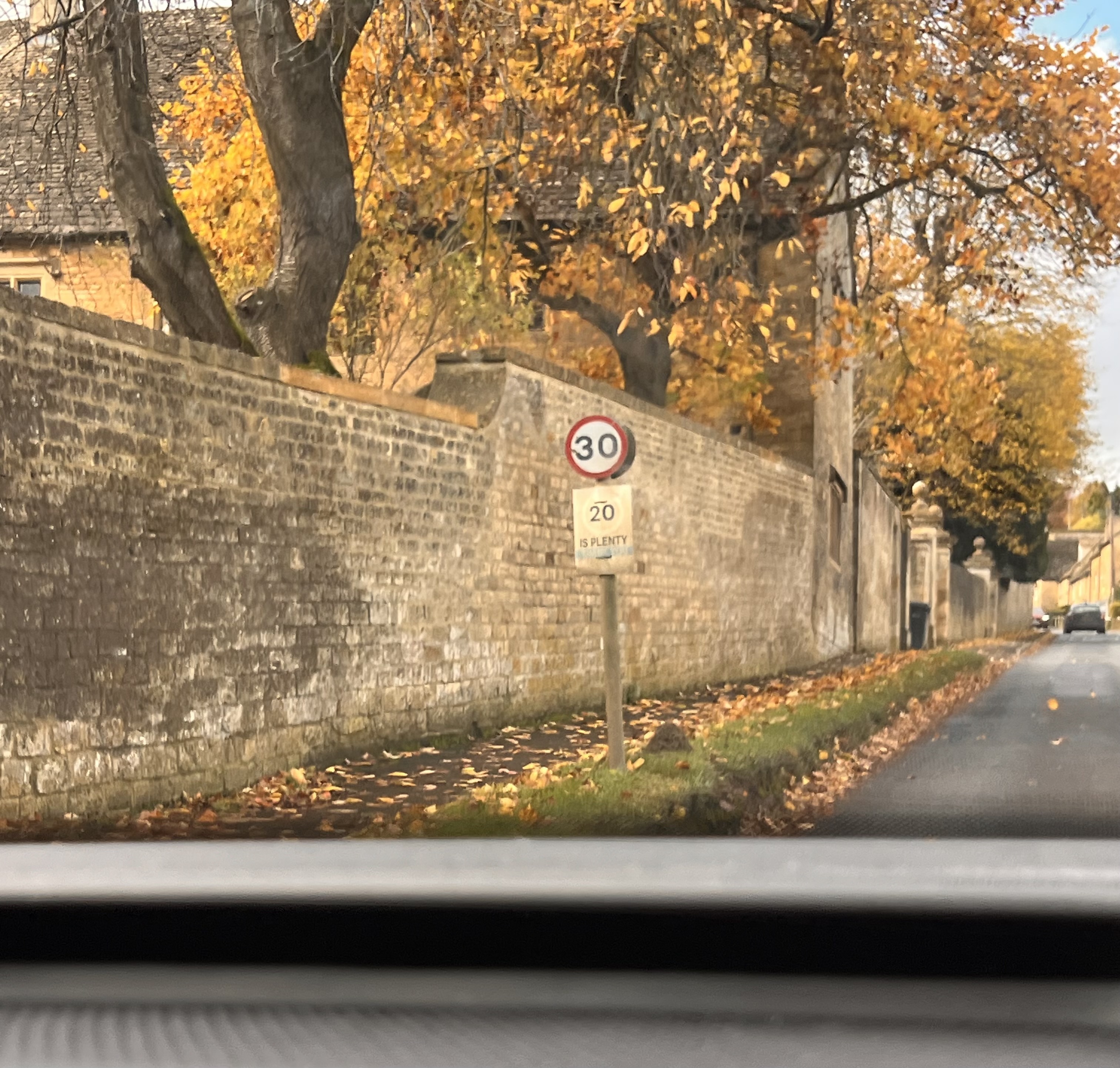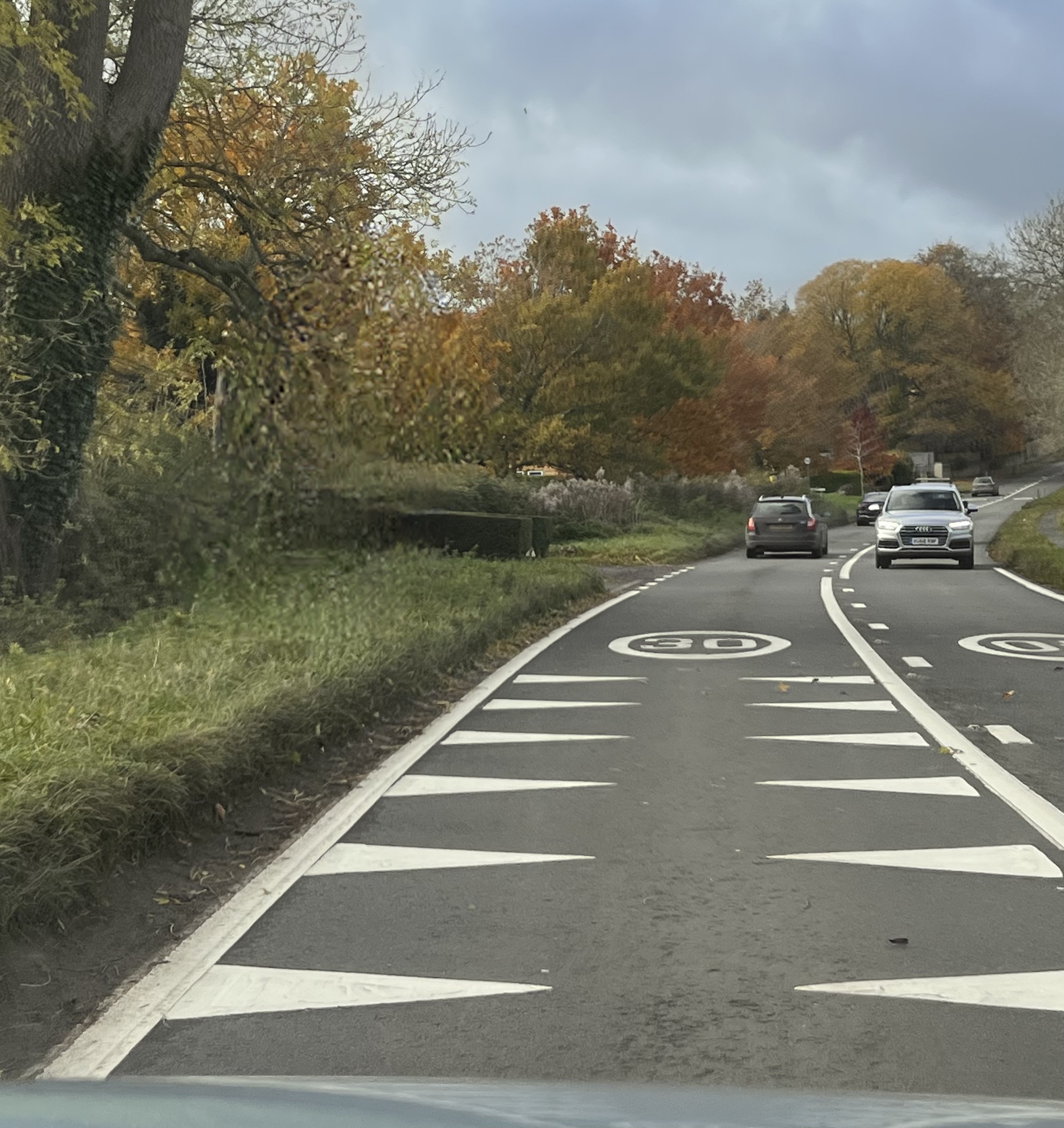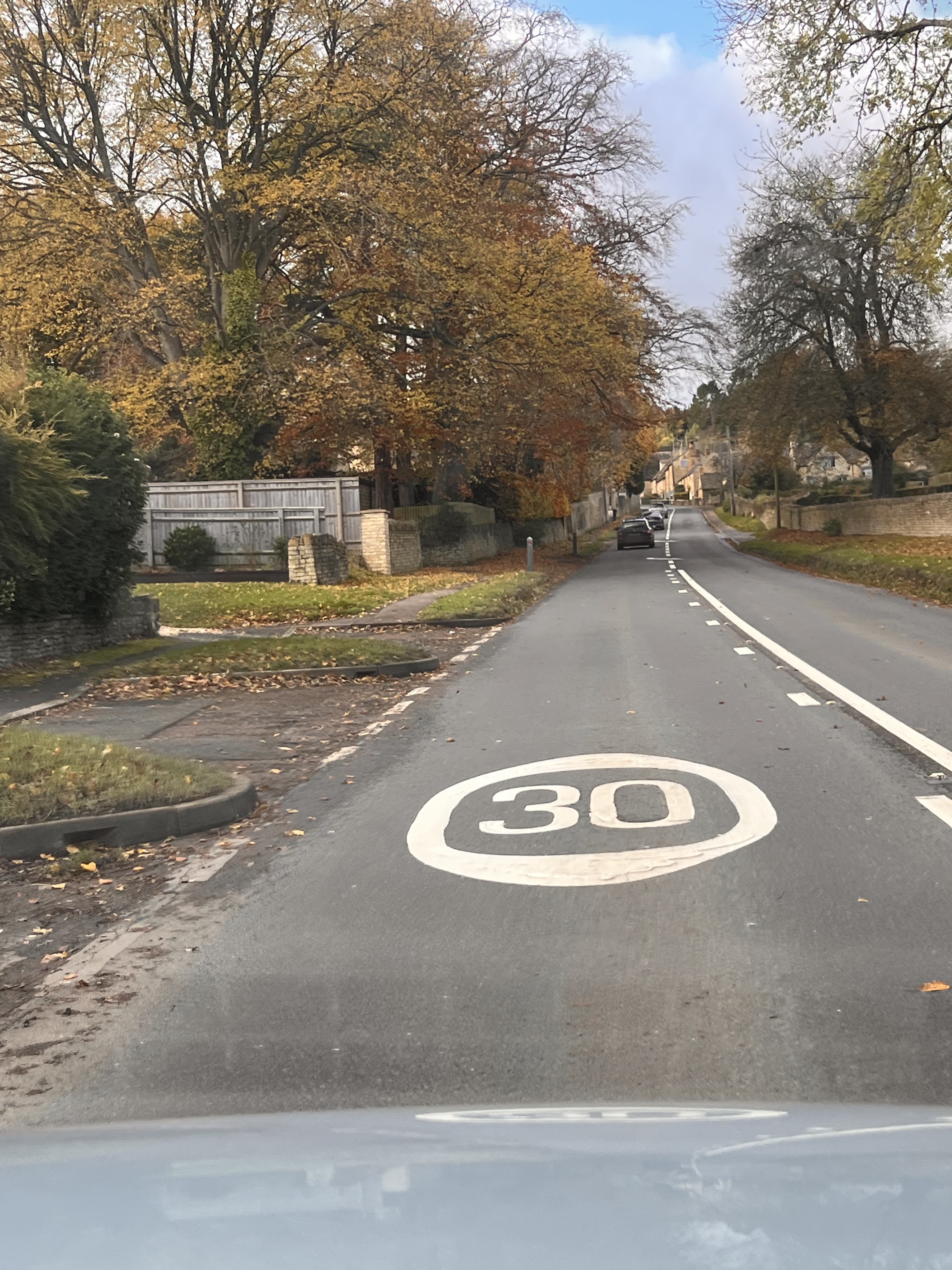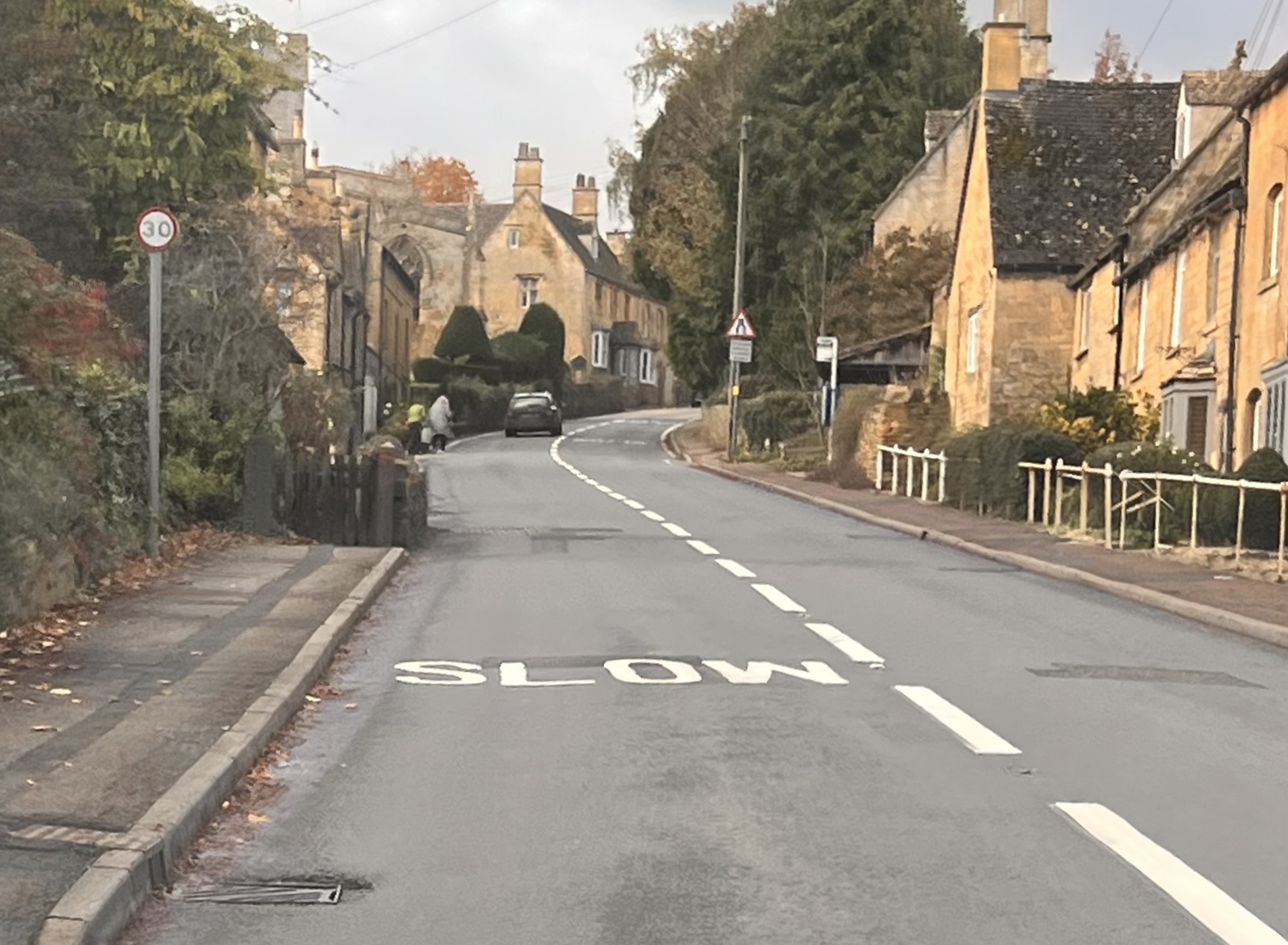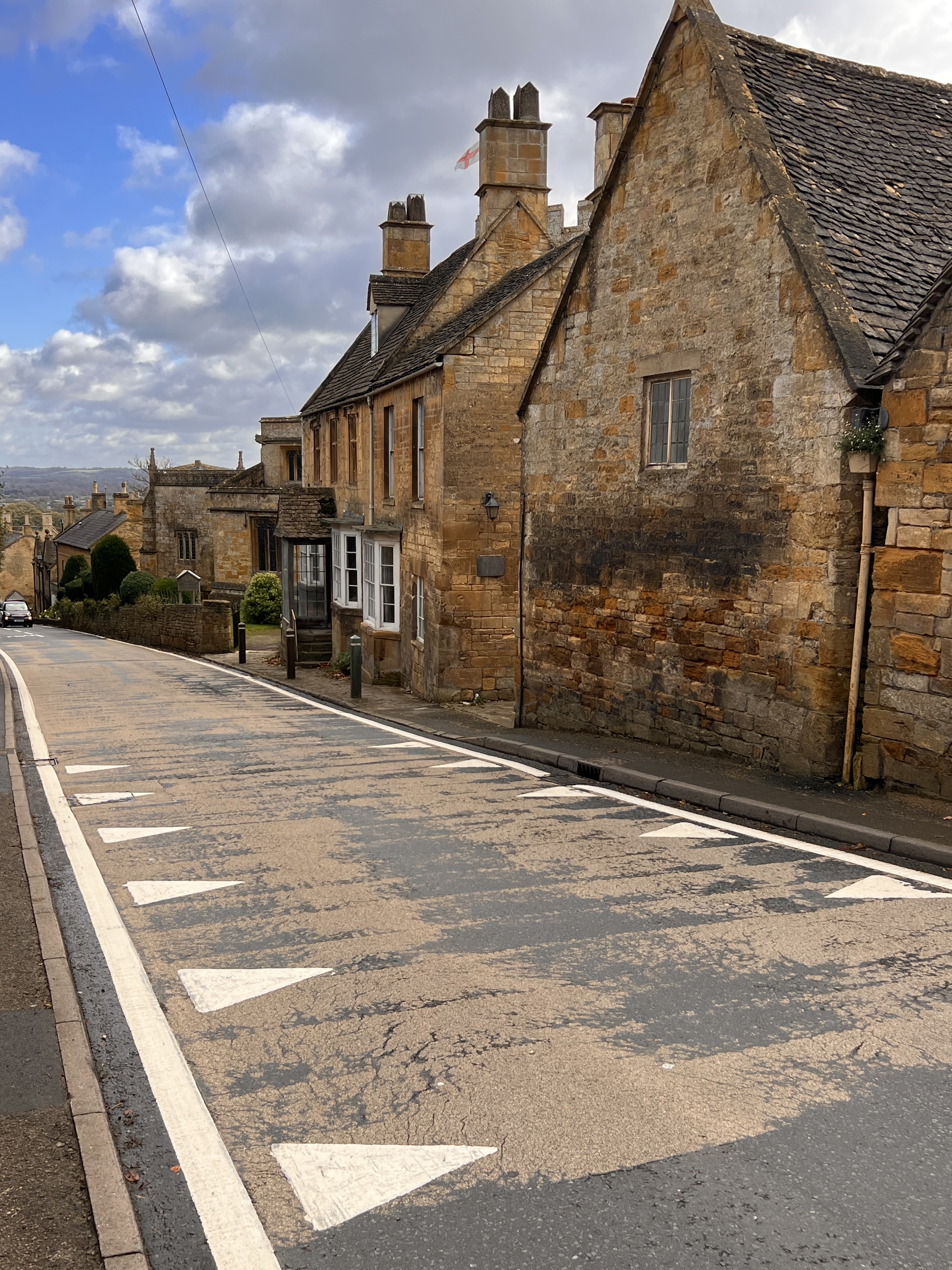When going home for a hospital appointment I took the time to take photos of existing speed awareness designs that are currently near and in my village. I would not of ever thought about this without learning and researching about nudge design or my perspective being challenged about behavioural economics regarding changing people’s behaviour.
The images below show the nudge design that is on the road above where I live, they recently have put it up, as you can seen there are several all along on a main road. Originally I thought they were useless as if your going at high speed who will pay attention to them, but when having a conversation to my client about the signs he was trying to remember what word was used to describe the deaths and I knew it was casualties so the sign obviously had an impact on my memory which showed me that I obviously without knowing did look at the sign and pay attention to it.
This then made me think about the three levels of awareness as do people know they are looking at the sign without knowing or do people go out their way to look at the sign.
We looked at this during Martin’s Lecture but I needed to expand my knowledge and carry out more research to fully understand.
| Conscious mind | Preconsious mind | Unconscious/subconscious mind |
|---|---|---|
| We are aware | Not currently aware of but can be brought to consciousness | Primary source of human behaviour |
| Thoughts Memories – easy to retrieve Feelings | Anything that can be brought into the conscious mind | The part of the mind of which you can’t see |
| Mental processing that allows us to talk and think about logically | Thoughts Feelings Not thinking about your phone number but then when someone asks you can recall it with ease. | Feelings – fears, memories Motives Decisions – beliefs Influenced by past experiences |
| Being aware you are thirsty so you get a drink | Forgetting to grab cheese during a grocery trip until you see a sign that advertises a half-off cheese sale | Breathing. We don’t have to think about breathing, but we can change how we control our breath and its pattern |
So…. which one do we use while driving??
Driving combines the conscious and unconscious/subconscious brain activity.
Behaviour is driven by the Subconscious mind (right side of brain).
| Conscious mind | Subconscious mind |
| When you are new to driving your focus is aimed at your car’s gear and clutch | Once you have been driving for awhile ad become more skilled your subconscious mind records your actions and you drive without making conscious effort |
| You notice every pothole, every bump or obstacle | You change gears automatically Listen to music while driving Talking on the phone |
| Driving is routine for us, but we can change our speed and the safety of ours by preventing accidents and dangers occurring |
Intrinsic and extrinsic motivation
| Extrinsic | Intrinsic |
|---|---|
| Persuades behaviour through external rewards | Involves doing something in spite of there being no obvious external rewards |
| Discourages behaviour through punishments | Arises from influences, incentives |





Speed enforcement is basically an extrinsic motivational approach. The fear of punishment (external factors) change driver’s speed behaviour.
Example
The combined influences of new laws, police enforcement and public communication campaigns have made more drivers worldwide aware of have accepted the rule ‘no drink and driving’ which is now perceived as normal. It’s not a new rule to anyone. This is a positive development towards an intrinsic motivation.
Example of extrinsic motivation: Reducing alcohol consumption to avoid getting arrested for drunk driving.
European Commission stated;
‘More information about the effect of speed on crash and crash severity may help to increase the intrinsic motivation to comply with the speed limit’.
Source
The quote above has got me thinking about the importance of researching the relation of effects on speed and crashes.
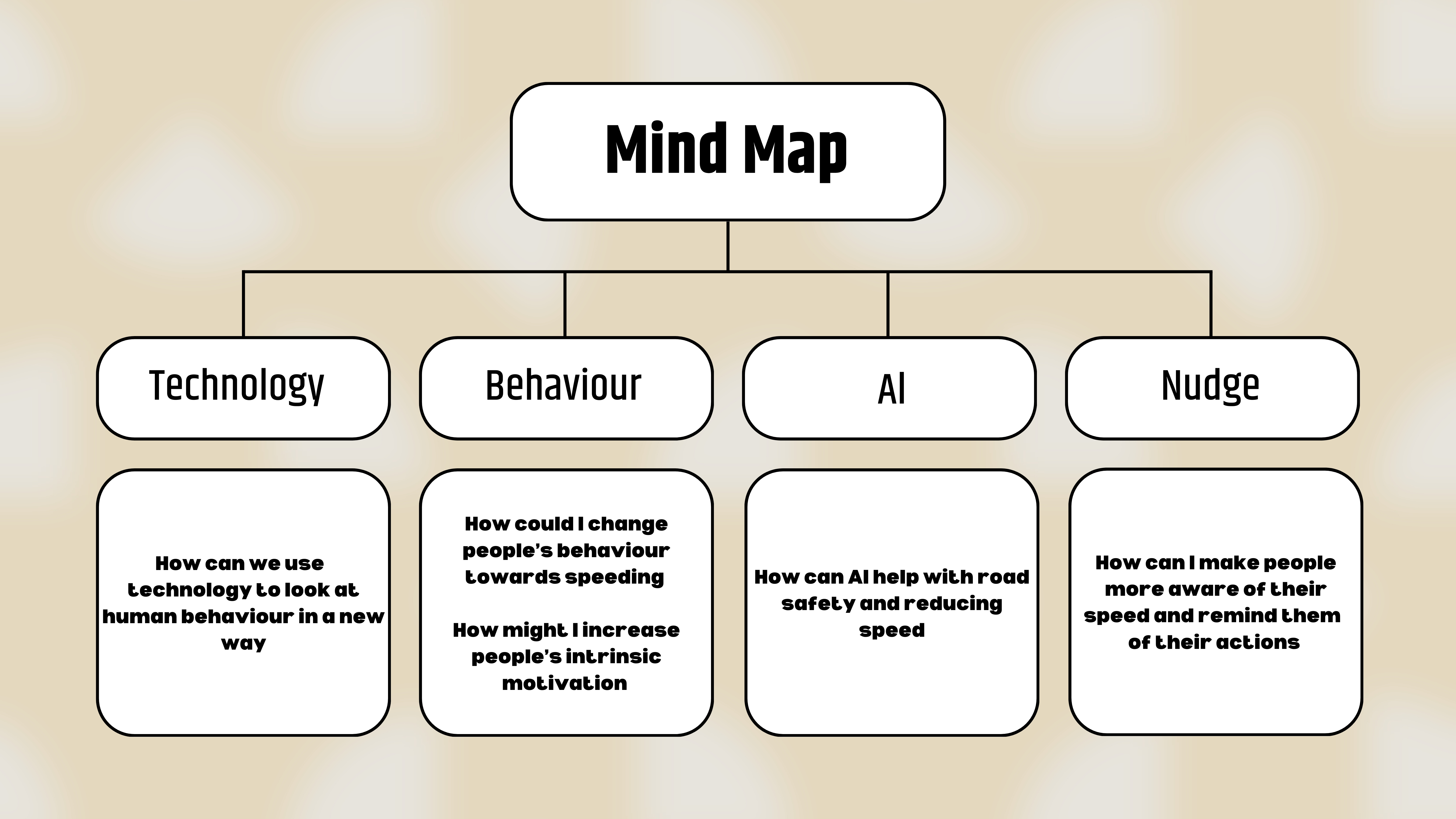
Colour psychology
When thinking about the colour below used for the sign I wanted to know why the sign was designed to be that specific colour so I researched the actual colour which was #D97904.
Colours cause an emotional response. The sign is communicating the amount of deaths, which as a topic is upsetting and emotional.

The colour psychology of orange relating to the sign I saw (shown above).
| Associated with the colour orange | Description |
|---|---|
| Stimulation | Visually stands out Attention grabbing |
| Positivity | The colour psychology of orange representing positivtiy compared to the sign communicating deaths creates an impactful design communication message. |
| Pride | the colour orange representing pride is also an effective choice for a road sign showing a number of deaths as it communicates that also drivers being pride before safety has the consequence of death as well. |
| Impatience | The text showing causalities supported by the colour psychology of orange communicates drivers have been killed as a consequence of impatience. |
When thinking about the combination of black (the information) and the orange (sign colour) evokes sadness, decay, and death (Cherry, 2023). Which looking at the sign the colour scheme supports the visual message and communicates the topic of death effectively.

The reason why I could remember the number of causalities is due to the different colour used for the number. As you can see the number shown is in red which makes it stand out more.
I wouldn’t think of the combination of red and yellow orange together would be a good choice due to the lack of legibility, so I thought it would be interesting and important if I were to research this.

Arthur & Passini reported in their book of way finding a reliable calculating method to calculate the contrast difference between two colors.
When the brightness differential is 70 percent or higher the legibility is strong.
Less than 70 percent, the legibility is weak and those colors shouldn’t be combined.
As we can see using orange and red isn’t appropriate (62), but using yellow and red is appropriate (82). I would argue that the colour of the sign is a combination of yellow and orange and due to that combining red with the yellow orange colour of the sign means it is legible due to the percent is higher than 70 percent.
Research also showed me that I was correct in my assumption as Adobe states that red and yellow combine well together(Adobe, Three color combinations that go great together).

The images below show the existing road signs before and throughout Bourton On The Hill.
The images below show the speed awareness measures that are on the road throughout the village. As you can see there are 30 limits, SLOW and white crocodile teeth. All of which doesn’t help people to slow down through the village.
Reflection from Brief 1
Using the same technique I used for my first brief which was about dissecting design to understand it I applied it to a road sign that I captured (an example above) so I could understand how the design works and why the law chose it to be used for communication.
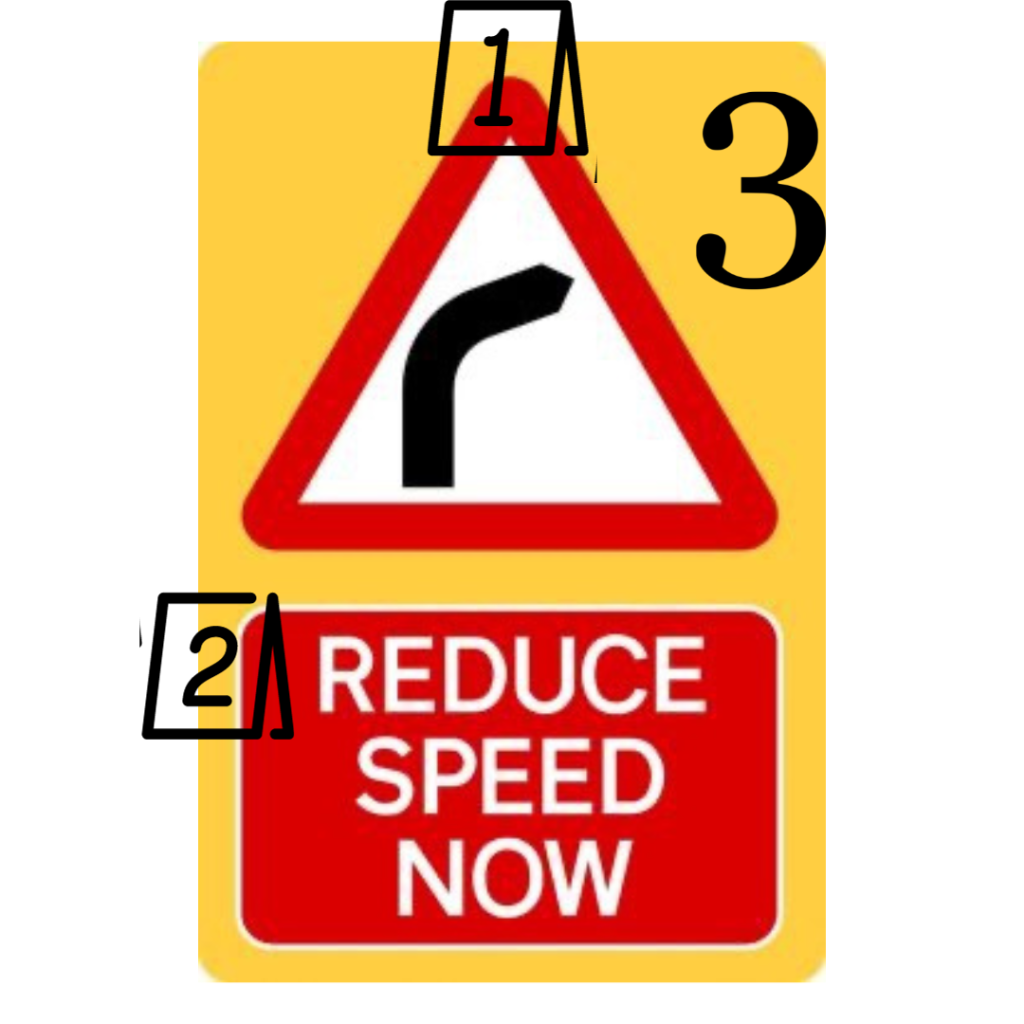
- The red triangle represents a hazard. This communicates to us that there is a risk coming up or something that could harm us. It’s there to make us take precautions.
- The colour red is attention grabbing, so people will notice it and will be drawn to it. It visually communicates danger ahead.
- The colour yellow represents caution, and draws your attention to it. It visually communicates hazards ahead.
Using yellow and red creates a bold sign that you can’t miss. The contrast between the colours makes you notice it.
Dissecting the above helps me to think about what colours are used and why.
Bibliography
Art Therapy . (2012, December 24). Color psychology: The psychological effects of colors. Art Therapy. http://www.arttherapyblog.com/online/color-psychology-psychologica-effects-of-colors/
Cherry, K. (2023, March 14). How does orange influence your moods?. Verywell Mind. https://www.verywellmind.com/the-color-psychology-of-orange-2795818#:~:text=On%20the%20plus%20side%2C%20people,superficiality%2C%20arrogance%2C%20or%20pride.
Adobe. (n.d.). Three color combinations that go great together – adobe. https://www.adobe.com/creativecloud/design/hub/guides/sets-of-3-colors-that-go-great-together.html
Peer, M. (2022, April 5). The differences between your conscious and Subconscious Mind. Marisa Peer. https://marisapeer.com/the-differences-between-your-conscious-and-subconscious-mind/
Fahkry, T. (2021, May 25). Our subconscious mind and how it impacts on our behaviour. Blisspot. https://blisspot.com/blogs/our-subconscious-mind-and-how-it-impacts-on-our-behaviour/#:~:text=You%20notice%20every%20bump%2C%20every,drive%20without%20making%20conscious%20effort.
European Commission . (n.d.). Mobility & Transport – Road Safety. https://road-safety.transport.ec.europa.eu/eu-road-safety-policy/priorities/safe-road-use/safe-speed/archive/intrinsic-vs-extrinsic-motivation_en
Welsh , M. (2023, November 6). Intrinsic vs. extrinsic motivation: Understanding the difference. Choosing Therapy. https://www.choosingtherapy.com/intrinsic-vs-extrinsic-motivation/






